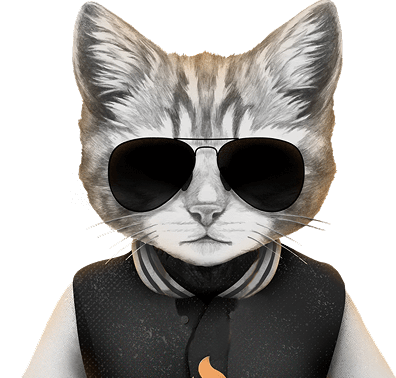
A few months ago, I became a mother. When I first started shopping for baby clothes and essentials, I found myself endlessly browsing marketplaces and that’s when I started noticing something new. Product listings for infant clothing, which back in the day used to feature only beautifully arranged flat-lay shots or a handful of real baby models, were now including AI-generated infants.
At first, I didn’t pay any attention to it or think much of it. After all, I was just looking for cute and comfy outfits for my little one. But the marketer in me couldn’t ignore the change. Brands no longer seemed to rely solely on traditional photoshoots with real babies. On the contrary, they could showcase their clothing on AI-generated infants of different ages, ethnicities, and in various poses.
This new approach to how baby clothing brands create content, market their products, and showcase their items online isn’t a passing trend, I reckon. And here’s why: AI-generated visuals make content creation way easier and more affordable, especially because working with real newborns can be challenging and takes a lot of coordination, patience, and resilience.
Why marketing baby clothes has always been tough
Let’s now expand on these challenges. Anyone who has worked in fashion marketing probably knows how hard it is to create great product visuals. But when it comes to baby clothing, the challenges are even bigger:
Finding proper UGC is difficult — Influencer marketing and customer photos are a big deal for fashion brands, but getting high-quality UGC for newborn clothing can be a hurdle. New parents are exhausted and don’t always have the time or energy to take and share polished, brand-friendly photos.
Staged photoshoots are complicated and expensive — Unlike adult or kids' fashion, photographing newborns isn’t easy. Brands have to think about baby safety, unpredictable sleep schedules, and getting parental consent for commercial use — all of this adds time and cost.
That’s why so many brands have stuck with flat-lay images (outfits neatly arranged on a plain background) for so long. It was the easiest option, even if it wasn’t the most helpful for shoppers.
But as a mother, I can say that looking at an outfit laid out on a neutral background doesn’t tell me much. Will it fit well? Will my baby be comfortable? How does it actually look when worn? These are the things parents wonder about in the first place, and such product photos don’t really help. That’s why content that shows all this — even if AI-generated — makes more sense for parents.
How AI is helping baby clothing brands demonstrate their outfits in a new way
AI-generated models are incredibly realistic digital images of people, except they’re not real at all. Unlike stock photos, these models are completely created by AI, but look just like real babies.
For baby clothing brands, this technology opens up new possibilities:
It allows showing outfits on babies of different ages: Newborns, 3-month-olds, 6-month-olds, and beyond, all without the need for numerous photoshoots.
Brands can represent more diverse babies: Brands can easily customize skin tones, ethnicities, and facial expressions to ensure more inclusive marketing.
Outfits can be presented in different settings: Babies can be shown in various poses, lighting, backgrounds, contexts, and angles without the cost and hassle of in-person photoshoots.
Creating more product images quickly: Brands can generate consistent, high-quality photos for websites, social media, and marketplaces without having to schedule new shoots every time.
This is a big change in how baby clothing brands market their products. In the past, they had to rely on occasional influencer content or organize expensive professional shoots with real babies. Now, AI makes it possible to create lifelike product images in a breeze, without waiting for the perfect shot.
AI-generated product images boost conversions but …
AI-generated content is also giving brands an opportunity to make product listings and ads more eye-catching. These realistic images grab attention, leading to more clicks and interactions on e-commerce platforms and social media. Brands that have tested AI-generated models alongside traditional flat-lay images have noticed a clear difference: shoppers respond better when they see clothes on a lifelike model rather than just laid out on a surface.
For example, research by Prime AI found that product images featuring AI-generated models can increase conversion rates by up to 30% because they help consumers better imagine how an item would actually look on them. I’ve seen this myself — when shopping for baby clothes, I always prefer seeing how something fits rather than just looking at a perfectly folded outfit.
But while AI-generated content has its benefits, it also brings up ethical questions. Should brands clearly disclose that they are using AI-generated images? For example, if these visuals don’t accurately reflect the actual product, they could be misleading. Let alone that there’s also the bigger question of what this means for real models and human-created content in the long run.
To keep consumer trust, brands need to find the right balance. AI should complement authenticity, not replace it. That means using it as a tool to enhance marketing, while still prioritizing real, relatable content.
Why real influencers still matter
One of the things I’ve always loved about influencer marketing is its authenticity. At HypeAuditor, where we focus on influencer analytics and strategy, we see every day how much real people influence purchase decisions. AI-generated images are exciting, but they can’t replace human connection. Instead, I see them more as an enhancement — like icing on the cake, not the cake itself.
As AI-generated visuals become more common, real content creators like influencers, parent bloggers, and micro-creators will always play an important role in keeping things personal. These creators have long been trusted voices in the baby fashion industry, offering real product showcases that parents can confide in and relate to. While AI-generated images provide polished and scalable visuals, they don’t have that personal touch of an influencer who genuinely uses and reviews a real product.
Rather than replacing influencer-driven content, AI can work alongside it. Many brands are already blending both: using AI-generated models to show different sizes and colors on their websites while working with influencers to create personal, experience-driven content. For example, a parent influencer might review a baby onesie on Instagram to share their thoughts on the fabric and fit, while the brand’s website features AI-generated models demonstrating the same product in various styles.
This mix of AI-powered visuals and real influencer stories helps brands create engaging content that meets the needs of today’s shoppers. It keeps things efficient and visually polished without losing the trust and emotional connection that only real people can bring.
Conclusion
AI-generated babies are just the beginning of a big change in how brands market their products online. As AI tools become more advanced, brands will have more ways to create product images quickly, affordably, and in ways that better represent different customers.
As a new mother, I find this shift fascinating, not just as a marketer but as a shopper, too. AI makes online shopping feel more interactive and helpful. Whether we realize it or not, it is already influencing how we find and choose products for our little ones. The brands that use AI thoughtfully, by balancing innovation with honesty and trust, will be the ones that earn parents’ trust and set new standards in baby fashion.










